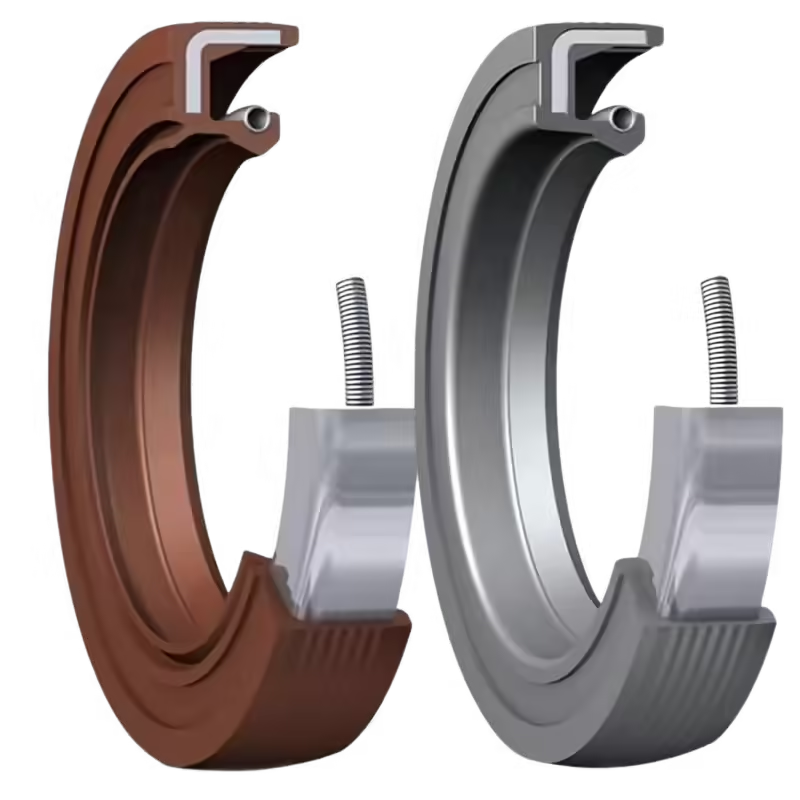Manufacturing Rubber Seals – Comparing China and Southeast Asia
Introduction
Overview of Rubber Seals
Rubber seals are essential components used across various industries, including automotive, electronics, machinery, and more. These seals play a critical role in ensuring the proper functioning of equipment by preventing leaks, maintaining pressure, and protecting against contaminants. Their reliability and performance are pivotal for the safety and efficiency of modern industrial applications.
Purpose of the Comparison
This article aims to compare the strengths and limitations of manufacturing rubber seals in China and Southeast Asia. The comparison focuses on key factors such as manufacturing costs, production capacity, technological capabilities, quality control, labor force, sustainability, and raw material sourcing. By analyzing these aspects, businesses can make informed decisions about their global supply chain strategies.
1. Manufacturing Costs of Rubber Seals
1.1. China’s Rubber Seal Manufacturing Costs
Labor Costs
Despite rising labor costs, China remains cost-effective in rubber seal manufacturing due to economies of scale and efficient production processes. The country’s extensive experience and optimized workflows help mitigate the impact of increased wages.
Cost Efficiency
China’s vast production capabilities and integrated supply chains contribute significantly to maintaining low production costs. The ability to produce large volumes efficiently allows manufacturers to offer competitive pricing.
Material Sourcing
China has well-established access to raw materials, such as rubber, which is crucial for rubber seal production. The proximity to suppliers and the availability of diverse materials help reduce overall material costs.
1.2. Southeast Asia’s Rubber Seal Manufacturing Costs
Labor Cost Advantage
Countries like Vietnam and Indonesia offer significantly lower labor costs compared to China. This advantage is particularly attractive for high-volume, labor-intensive rubber seal production, enabling manufacturers to reduce overall expenses.
Logistical Challenges
While labor costs are lower, some Southeast Asian countries face logistical and transportation infrastructure challenges. Inadequate infrastructure can lead to increased transportation costs and longer lead times, offsetting some of the labor cost benefits.
Material Costs
Many Southeast Asian countries rely on importing raw materials from China, which can elevate the overall cost of rubber seals. Dependence on external sources for essential materials introduces additional costs and potential supply chain vulnerabilities.
2. Production Capacity and Supply Chain for Rubber Seals
2.1. China’s Rubber Seal Production Capacity
Established Infrastructure
China boasts a highly developed manufacturing infrastructure capable of mass-producing rubber seals at scale. Numerous factories are equipped with advanced machinery, facilitating high-volume and efficient production.
Complete Supply Chain
China’s comprehensive supply chain, encompassing raw material procurement, manufacturing, and assembly, ensures quick turnaround times and cost-efficient production. The seamless integration of different supply chain stages enhances overall productivity.
Advanced Equipment
Chinese manufacturers utilize state-of-the-art machinery for precision molding and sealing technologies. This technological edge enhances production capacity and ensures the production of high-quality rubber seals.
2.2. Southeast Asia’s Rubber Seal Production Capacity
Emerging Production Facilities
While Southeast Asia has significant potential to scale rubber seal production, many countries still lack the extensive manufacturing infrastructure that China offers. However, investments are being made to develop more robust production facilities.
Reliance on Imports
The reliance on imported raw materials from China, combined with relatively newer manufacturing technologies, can hinder production efficiency in Southeast Asia. This dependence may lead to delays and increased costs in the manufacturing process.
Growing Capacity
Countries like Vietnam are expanding their production capabilities by building more advanced rubber seal manufacturing facilities. Despite these improvements, they may still face capacity limitations when handling high-volume orders compared to established Chinese manufacturers.
3. Technological Capabilities in Rubber Seal Manufacturing
3.1. China’s Technological Advancements
High-Tech Manufacturing
China leads in precision molding and advanced rubber processing technologies, enabling the production of high-quality and durable rubber seals. The integration of cutting-edge technology ensures that Chinese manufacturers can meet stringent industry standards.
R&D in Rubber Seal Innovation
Many Chinese manufacturers invest heavily in research and development to enhance the performance of rubber seals. Innovations focus on improving resistance to extreme temperatures, chemicals, and wear, thereby expanding the applications and reliability of rubber seals.
Automation and Efficiency
Automated production lines in China help maintain high-quality standards while reducing labor costs. Automation enhances manufacturing efficiency, minimizes human error, and optimizes the overall production process.
3.2. Southeast Asia’s Technological Landscape
Limited Technological Infrastructure
Although Southeast Asia is home to a growing number of rubber seal manufacturers, many companies still rely on basic manufacturing techniques and machinery. This limitation can affect the quality and precision of the produced seals.
Quality Control Gaps
Technological gaps in some Southeast Asian countries may lead to inconsistencies and lower precision in rubber seal production. These quality control issues can impact the reliability and performance of the final products.
Improving Technology
With increasing foreign investment, some Southeast Asian countries are adopting more advanced manufacturing technologies. This technological upgrade aims to improve the quality and variety of rubber seals, enhancing their competitiveness in the global market.
4. Quality Control in Rubber Seal Manufacturing
4.1. China’s Quality Control for Rubber Seals
Stringent Quality Standards
Chinese rubber seal manufacturers are increasingly adhering to international quality standards such as ISO 9001. This commitment ensures a high level of product consistency and performance, meeting the demands of global markets.
Variation in Quality
While large manufacturers in China produce high-quality rubber seals, smaller factories may struggle with inconsistent quality control. This variation can result in discrepancies in product performance and reliability.
Automation and Inspection
The use of automation in the production process allows for more effective quality inspections. Automated systems help minimize defects and ensure that rubber seals meet the required specifications consistently.
4.2. Southeast Asia’s Quality Control for Rubber Seals
Quality Variability
The quality of rubber seals produced in Southeast Asia can vary significantly due to less-developed quality control systems in some regions. This variability can affect the overall reliability of the products.
Increasing Focus on Standards
With the influx of foreign companies, Southeast Asian manufacturers are placing greater emphasis on implementing international quality control standards and certifications. This shift aims to enhance product quality and meet global industry requirements.
Third-Party Testing
Some manufacturers in Southeast Asia rely on third-party testing to ensure that rubber seals comply with international standards. This approach is particularly important for applications in industries such as automotive and aerospace, where stringent quality requirements are essential.
5. Labor Force and Working Conditions in Rubber Seal Manufacturing
5.1. China’s Labor Force
Skilled Workforce
China has a large, skilled labor pool, especially in manufacturing hubs like the Yangtze River Delta. The region’s extensive experience in rubber product manufacturing ensures a workforce proficient in precision manufacturing techniques.
Labor Cost Increases
Rising labor costs, particularly in coastal areas, are prompting some manufacturers to relocate production to inland China or overseas, including Southeast Asia. This shift helps mitigate the impact of increased wages on overall production costs.
Training and Development
Continuous investment in worker training ensures that Chinese laborers are well-equipped for the precision manufacturing of rubber seals. Enhanced training programs contribute to higher productivity and better product quality.
5.2. Southeast Asia’s Labor Force
Low Labor Costs
Southeast Asia offers a competitive advantage with its lower labor costs, making it ideal for manufacturing cost-effective rubber seals. This advantage is particularly beneficial for businesses seeking to reduce production expenses.
Skill Development
Countries like Vietnam and Thailand are investing in improving the skill levels of their workforce to handle more advanced rubber seal production. Enhanced training initiatives aim to increase productivity and improve product quality.
Workplace Conditions
In some Southeast Asian countries, workplace conditions may be less regulated compared to China. However, efforts are underway to improve working environments in line with international standards, driven by both government initiatives and foreign investment.
6. Sustainability and Environmental Considerations
6.1. China’s Sustainability in Rubber Seal Production
Government Regulations
China is strengthening its environmental regulations, promoting greener manufacturing practices across various industries, including rubber seal production. These regulations aim to reduce environmental impact and encourage sustainable practices.
Green Manufacturing Trends
Many Chinese manufacturers are transitioning to environmentally friendly practices, such as using recyclable materials and minimizing emissions during rubber seal production. These trends align with global sustainability goals and enhance the industry’s reputation.
Waste Management
Rubber seal manufacturers in China are increasingly focusing on waste reduction and resource efficiency. Effective waste management practices help comply with both domestic and international sustainability standards, ensuring long-term environmental responsibility.
6.2. Southeast Asia’s Environmental Practices
Regulatory Challenges
Environmental regulations in Southeast Asia may not be as strictly enforced as in China, leading to varying degrees of environmental impact from rubber seal production. This inconsistency can affect the sustainability credentials of manufacturers in the region.
Growing Green Initiatives
Rising global demand for sustainable products is pushing Southeast Asian manufacturers to adopt greener production methods. Efforts include reducing emissions, utilizing eco-friendly materials, and implementing waste management practices.
International Pressure
Many companies in Southeast Asia are aligning with international sustainability standards to meet the expectations of global markets. This alignment involves adopting eco-friendly rubber materials, reducing waste, and enhancing overall environmental performance.
7. Rubber Imports in China and Vietnam’s Rubber Production Rank
7.1. Where Does China Import Rubber From?
Main Import Sources
China is one of the largest importers of natural rubber globally. The majority of its rubber imports come from Southeast Asian countries, including Thailand, Indonesia, and Malaysia. These nations are among the top producers of natural rubber worldwide.
Other Import Sources
In addition to natural rubber, China imports synthetic rubber from countries such as South Korea and Japan. These nations are renowned for their advanced chemical and synthetic rubber production technologies, providing China with high-quality materials.
Import Challenges
Despite having a well-established domestic rubber industry, China’s reliance on imported natural rubber is significant due to limited domestic production capacity. This dependency creates vulnerabilities in the supply chain, especially during global disruptions.
7.2. What Is the Rank of Vietnam in Rubber Production?
Global Ranking
Vietnam ranks as the world’s fourth-largest producer of natural rubber, following Thailand, Indonesia, and Malaysia. The country plays a crucial role in the global rubber supply chain, particularly serving the automotive and manufacturing industries.
Production Expansion
Vietnam’s rubber production has been steadily increasing, driven by government and private sector investments in expanding rubber plantations and improving cultivation techniques. These efforts aim to boost both the quantity and quality of natural rubber produced.
Competitive Pricing
Vietnam’s relatively low labor costs and extensive rubber plantation areas make it an attractive supplier of natural rubber to both domestic and international markets. Competitive pricing, combined with growing production capabilities, enhances Vietnam’s position in the global market.
7.3. Diversity of Raw Materials and Formulation Technology
Variety of Raw Materials
The manufacturing of rubber seals requires a diverse range of raw materials, with synthetic rubber comprising the majority. This diversity demands sophisticated formulation technology to achieve the desired properties and performance standards.
Advanced Formulation Expertise in China
China is home to numerous rubber compounding enterprises, each leveraging mature and advanced formulation technologies. These companies possess extensive expertise in blending various synthetic rubbers and additives to create high-performance rubber seals tailored to specific industrial applications. The depth of technical knowledge and experience in China ensures that manufacturers can produce rubber seals with superior durability, flexibility, and resistance to environmental stressors.
Technological Maturity vs. Southeast Asia
While Southeast Asia has made significant strides in rubber seal manufacturing, it lacks the same level of technical maturity and extensive experience in rubber compounding as China. The region is still developing its formulation capabilities, which can limit the ability to produce highly specialized or performance-critical rubber seals. This technological disparity highlights China’s competitive advantage in delivering high-quality, customized rubber seal solutions that meet the stringent requirements of global industries.
Conclusion
Summary of Key Comparisons
China maintains a competitive edge in rubber seal manufacturing through its economies of scale, comprehensive supply chains, and advanced technological capabilities. Additionally, China’s extensive expertise in rubber compounding ensures high-quality and diverse rubber seal products. However, rising labor costs and dependence on imported raw materials present challenges. Conversely, Southeast Asia offers lower labor costs and growing production capacities, making it a strong contender. Nonetheless, logistical issues, technological gaps, quality control inconsistencies, and limited formulation expertise need to be addressed to fully leverage its potential.
Best Fit for Different Needs
For businesses seeking high-volume and high-quality rubber seals, China remains the ideal choice, especially for industries requiring precision manufacturing, sophisticated formulation, and stringent quality control. On the other hand, companies prioritizing cost-efficiency and large-scale production may find Southeast Asia to be a more competitive option, provided they can manage logistical and quality challenges.
Future Outlook
Looking ahead, both China and Southeast Asia are expected to continue evolving in the rubber seal manufacturing sector. China will likely advance further in technological innovation, rubber formulation expertise, and sustainable manufacturing practices. Meanwhile, Southeast Asia will enhance its infrastructure, adopt more sophisticated manufacturing technologies, and develop its formulation capabilities. These developments will collectively drive the future growth of the rubber seal industry, emphasizing innovation, quality, and sustainability.
For more information, visit drorubber.com or contact us via WhatsApp: +0086 15815831911, WeChat: +0086 13784044874.





